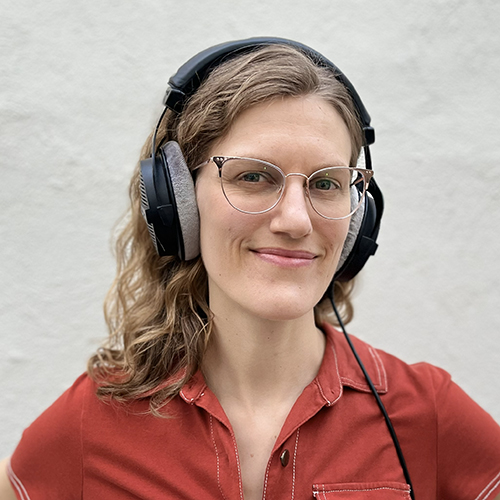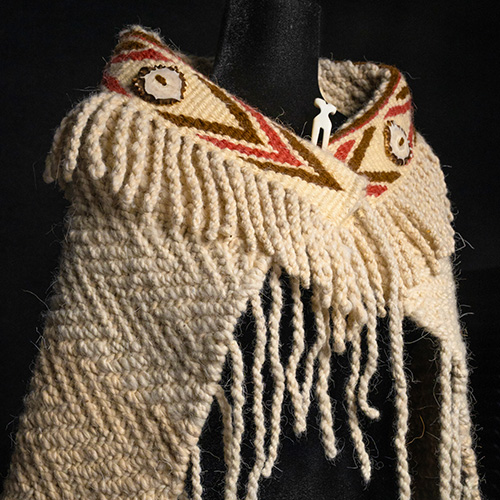When children on Palawan Island in the Philippines gathered earlier this year to practice traditional songs and dances of their Cuyonon culture, their inspiration came from an unlikely source: the Suquamish Tribe in Washington state.
Residents of Sibaltan, a village at the remote northern tip of Palawan Island, and Suquamish, a tribal community on Washington's Kitsap Peninsula, became acquainted over the past year through Ancient Shores, Changing Tides, a project facilitated by the Burke Museum that included cultural exchanges, workshops, mentorship, and exhibition support. The project was funded through the Museums Connect* program, which fosters connections between people in the U.S. and abroad through innovative, museum-based exchanges

Lace Thornberg (MA, 2010), Burke Museum project manager for Ancient Shores, came up with the idea for linking the two communities after spending time on Palawan Island, first as a UW museology graduate student and later through a Fulbright grant. During her second stay, Thornberg helped residents of Sibaltan establish the Balay Cuyonon Cultural House Museum, which replicates a traditional Cuyonon home. (Many Cuyonons settled on Palawan Island in the 1800s after leaving the island of Cuyo). The community hopes that the museum and other cultural offerings will attract visitors from nearby El Nido, a popular tourist destination. Looking for a way to sustain the newly established museum, Thornberg applied for the Museums Connect program, pairing the museum with the Suquamish Museum as its U.S. counterpart.
“Both Suquamish and Sibaltan are shoreline communities, where harvesting from the sea is a major economic resource, and both are home to important archaeological resources,” says Thornberg. Northern Palawan Island’s archaeological claim to fame is the oldest cremated burial site in Southeast Asia; Suquamish is home to the burial site of Seattle namesake Chief Sealth.

Over the past year, representatives from both communities—along with participants from the Burke Museum and Palawan State University Museum—crossed the Pacific to see firsthand how their counterparts promote heritage tourism. “The goal was to experience the other culture and visit the heritage attractions in the area,” says Thornberg, “and then see what ideas they might be able to take home to their own community.”
First a Palawan delegation visited Washington state, where they toured the Suquamish Museum, tagged along on a geoduck harvesting trip in Puget Sound, visited a local school, and attended a traditional Suquamish feast. They also enjoyed a performance by the Suquamish Canoe Family, a song and dance group that sings in full regalia at Suquamish gatherings. The performance inspired the Palawan visitors to revitalize their own Cuyonon song and dance traditions. “After they went back to the Philippines, they immediately ordered Cuyonon traditional dresses and had an expert in Cuyonon songs teach the kids,” says Thornberg.
After just three days together, there were hugs and tears. Everyone felt like they’d made new best friends for life.
The newly created Cuyonon troupe performed three months later when the Washington delegation traveled to Palawan Island. “The delegates from Suquamish were overwhelmed by their hosts’ warmth and hospitality,” says Thornberg. “There was a huge welcome party, and two days later a huge going-away party.” Between those two celebrations were visits to tourist sites, a fishing excursion, weaving demonstrations, and a tourism management workshop. Most memorable, however, were the many informal conversations between members of the two communities. “After just three days together, there were hugs and tears. Everyone felt like they’d made new best friends for life,” says Thornberg.
Buoyed by the exchanges as well as mentorship from the Burke Museum and Palawan State University Museum, the Suquamish and Sibaltan communities focused on the final phase of the project—developing a new exhibit for their respective museums. The Museums Connect grant included $5,000 for each museum to develop an exhibition.

The Suquamish Museum developed a temporary exhibit (on view through October 20, 2014) about Chief Sealth’s ancestral home in Suquamish—a traditional longhouse known as Old Man House. In Sibaltan, the community is designing a permanent exhibit featuring a traditional Cuyonon sailboat, or pangko, inspired by the Suquamish tribe’s successful efforts to revitalize its canoe-building tradition and its annual canoe journeys.
“No one in Palawan uses traditional sailboats anymore,” says Thornberg. “Everyone uses power boats. But they’re building a new [sailboat] with a carpenter who helped build one of the last pangkos in the 1970s. The vessel they’re building is not sea-worthy—they wanted to do a practice round—so it will be on shore and serve as a tourist attraction and a place where Cuyonon people can come and feel pride about their heritage.” There are plans to build a second pangko, which a crew will sail from Palawan to Cuyo, a traditional journey for previous generations.
Although the long-term impact of Ancient Shores, Changing Tides is still to be seen, many participants found the experience to be profound. “People are more interested in heritage since the Suquamish came,” says Mariel Francisco, a participant from Palawan State University. “People have more pride and responsibility. And they are more cooperative about the things they need to do. It has given people a chance to realize who they are: to discover their culture… [and] to develop unity.”

Although the project is wrapping up, connections between the Sibaltan and Suquamish communities continue to flourish. The two groups are discussing future collaborations, including the possibility of an exchange between their song and dance groups. And students from Chief Kitsap Academy in Suquamish and Sibaltan National High School, who connected as pen pals all year, hope to visit in the future.
As for Thornberg, she’s eager to return to Palawan Island to continue her work on cultural tourism. “I hope to be involved in the project in Sibaltan as long as they want me to be,” she says.
* Museums Connect is administered by the American Alliance of Museums through a grant from the U.S. Department of State’s Bureau of Educational and Cultural Affairs.
More Stories

Bringing Music to Life Through Audio Engineering
UW School of Music alum Andrea Roberts, an audio engineer, has worked with recording artists in a wide range of genres — including Beyoncé.

A Healing Heart Returns
In February, the UW Symphony will perform a symphony that Coast Salish elder Vi Hilbert commissioned years ago to heal the world after the heartbreak of 9/11. The symphony was first performed by the Seattle Symphony in 2006.

Coast Salish Traditions are "Woven in Wool" at the Burke
A Burke Museum exhibit, co-curated by Coast Salish weavers and Burke curators, highlights the importance of weaving to Coast Salish communities.